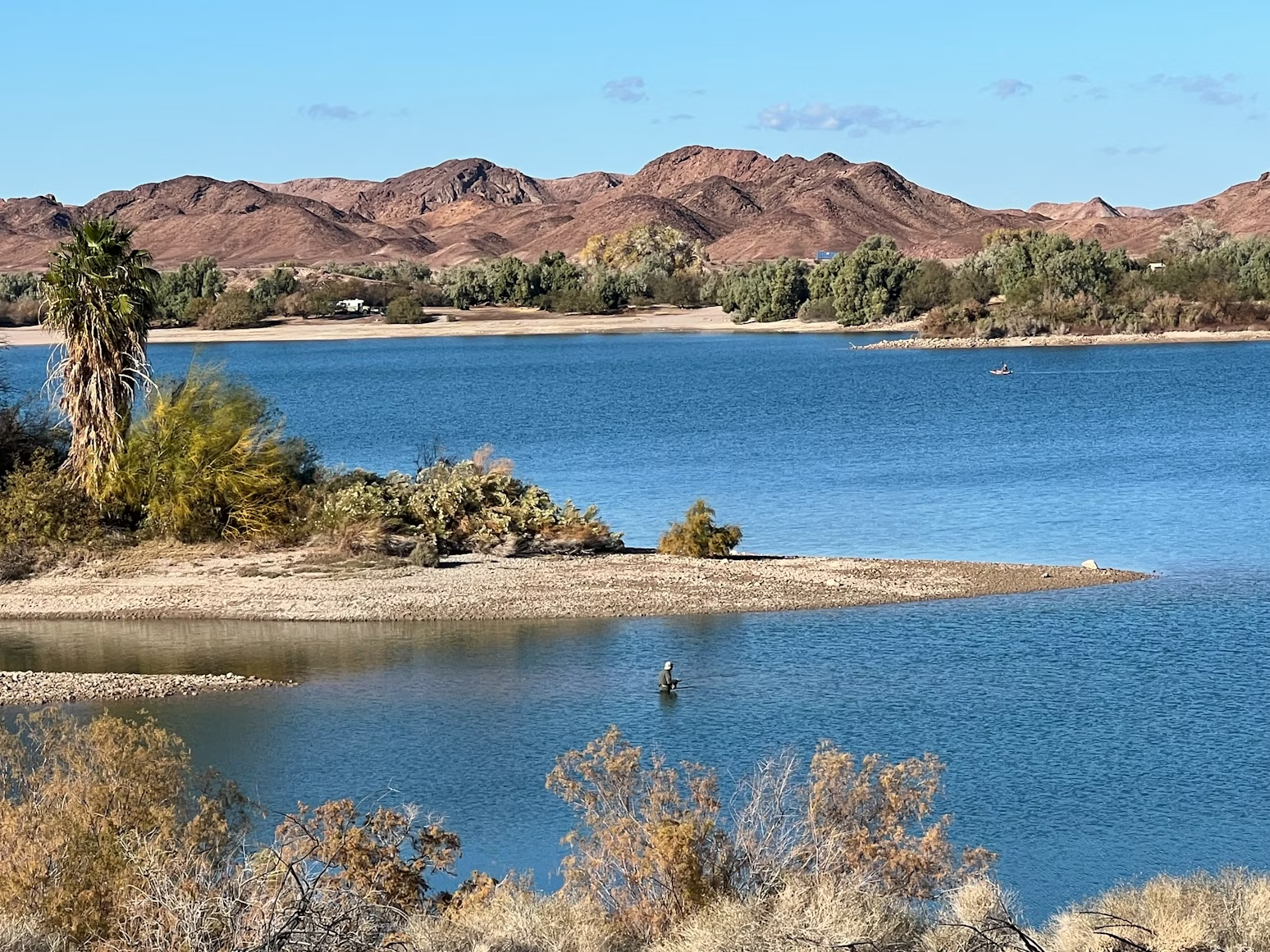The shrinking lifeline — what the Colorado river crisis means for millions in the west
 Unsplash
Unsplash Unsplash
Unsplash· 5 min read
Water from the Colorado irrigates 5.5 million acres of farmland, lights hydro turbines and supports recreation that fuels local economies. By summer 2023, Lakes Mead and Powell held only 36% of their combined capacity — the lowest late-season share in decades. If Lake Powell’s surface drops below 3,490 feet, Glen Canyon Dam loses its power functionality, pushing utilities toward costlier generation.
Federal scientists call the current stretch the longest regional drought since at least 800 CE. Rising temperatures are shifting snowfall and water supply by boosting snow evaporation — also called sublimation — turning more storms into rain, and causing more midwinter melt.
Conditions also swing wildly. April 2024 surveys logged snow water equivalent at 114% of the median across the headwaters. However, record May heat vaporised much of that bonus. Forecasters predict just 55% of average runoff into the reservoir for 2025.
Storage reflects the slide — total Colorado River system contents dropped to 39% of capacity in August 2025 from 44% a year earlier. Hydropower followed suit. U.S. dam generation fell to a 23-year low in 2024, forcing grids to burn more natural gas and nudging electricity bills upward.

In January 2025, the Bureau of Reclamation released draft operating alternatives for the post-2026 era, promising deeper, more equitable cuts and stronger Tribal participation across the seven-state basin. Short-term deals have already set aside 1.6 million acre-feet, buying time while negotiators hammer out a permanent fix. These moves slow the crash but do not erase the structural gap between supply and use.
A 2024 study tracked every drop. Nineteen percent sustains wetlands and riparian zones, while irrigated agriculture claims 52%, mainly to grow cattle feed. Livestock forage remains the basin’s most significant demand, not lawns or faucets.
Nitrogen-rich farm runoff fuels algal blooms that strip rivers of oxygen. Species flee hypoxic stretches, but many lose access to food or refuge during migration and become easy prey. Low flows intensify the cycle by concentrating nutrients and slowing dilution.
You watch riparian bird counts drop as insect larvae disappear, starving nestlings that depend on mayfly hatches. The chain reaction moves up the food web, thinning sport-fish populations and shrinking the outdoor-recreation economy that many rural towns rely on.
Cities from Denver to Los Angeles run rebate programs for low-flow fixtures, turf removal and leak detection. Yet, municipal taps still consume a significant part of the basin supply. Your household can cut indoor demand by 20% to 60% by swapping older toilets with U.S. Environmental Protection Agency WaterSense models. This change saves roughly 13,000 gallons a year.
High-rise owners also trim usage by installing sub-metering that rewards tenants who keep consumption low. Several utilities now pair smart meters with AI leak alerts, stopping burst pipes within hours and saving millions of gallons each month.
Good data unlocks targeted cuts. In 2024, the City of Phoenix wired 760 storm-drain outfalls with new sensors to turn street runoff into aquifer recharge credits and opening space for neighborhood-scale rain capture. On the research side, remotely operated vehicles (ROVs) extend inspection depth from the 40-meter ceiling most divers tolerate to 100 meters so scientists have a safer, richer view of submerged infrastructure.

Collective action shapes basin-wide outcomes faster than individual fixes. Your vote, spending choices and public comments hold more water than any low-flow showerhead. Use the moves below to steer policy and finance toward a living river:
• Secure Tribal partnerships: In April 2024, the Colorado River Indian Tribes agreed to fallow 10,000 acres and bank 150,000 acre-feet in Lake Mead over three years.
• Press for targeted caps on heavy users: Nevada’s 2023 Assembly Bill 220 let the Southern Nevada Water Authority limit the highest-using households to 163,000 gallons a year.
• Seed local water banks: Phoenix’s new storm-drain program channels urban runoff into recharge basins, creating a city-level reserve that eases summer demand spikes without new dams.
• Sponsor on-farm tech swaps: Imperial Valley farmers piloting drip lines and soil-moisture sensors cut application rates by roughly 2 acre-feet per acre in 2023 while maintaining yields.
• Expand citizen-science monitoring: Recreational divers seldom pass 40 meters, but ROV teams now map seawalls and intake tunnels to 100 meters to feed real-time models that forecast shortages months ahead.
These five levers move billions of gallons without waiting for interstate compacts or billion-dollar pipelines. Stack them and you accelerate measurable gains within a single irrigation season. Track those collective savings on public dashboards and wield the data to press elected leaders for deeper, basin-wide reforms.
The Colorado River crisis demands direct engagement. You can watch allocations erode through lawsuits and emergency releases or direct capital, votes, and curiosity toward conservation that lets the river reach the sea again. Hydrology will not revert to 20th-century norms, but collective resolve can still secure water, power and ecological grace long after the drought has a name in history books.
illuminem Voices is a democratic space presenting the thoughts and opinions of leading Sustainability & Energy writers, their opinions do not necessarily represent those of illuminem.
Track the real‑world impact behind the sustainability headlines. illuminem's Data Hub™ offers transparent performance data and climate targets of companies driving the transition.
Steve Harding

Water · Nature
Diego Balverde

Effects · Water
Praveen Gupta

Effects · Mitigation
Financial Times

Power & Utilities · Water
BBC

Nature · Water
Eurasia Review

Carbon Capture & Storage · Water